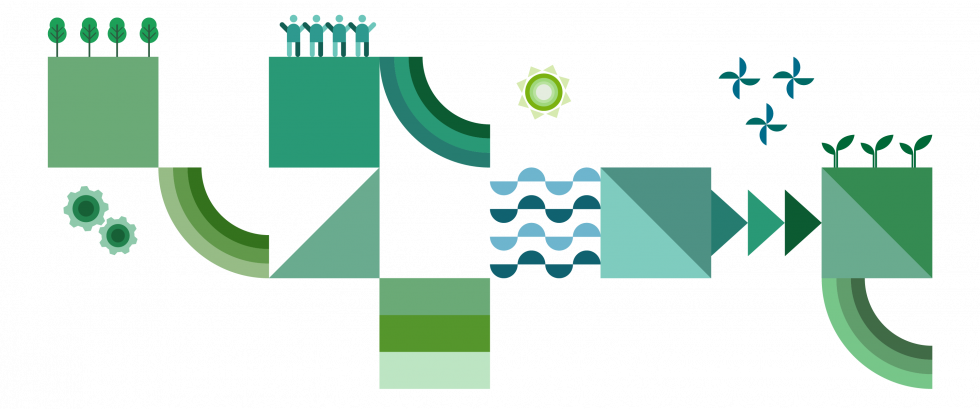How to approach the greening of higher education?
Higher education institutions can play a key role in the implementation of the green transformation because:
- they are centres of knowledge generation and distribution;
- they create space for many people to think together – also critically;
- they are also classic institutions that face challenges like any others – with the costs of maintaining buildings, management, housing, nutrition – so they can develop and test new solutions in their operations.
Therefore, in a microcosm, higher education institutions contain all the components of social life and can initiate, develop and then disseminate knowledge, competences and ways of acting that contribute to sustainable development and the green transition.
In higher education institutions, the impulse to start or deepen the green transformation may come from anywhere in its structure, for example:
- through the development of a research institute within it, which has experts specializing in a certain field addressing and contributing to activities for sustainable development and the green transition;
- by including sustainability and biodiversity criteria in all purchases, tenders and contracts commissioned by higher education institutions;
- through the initiatives of leadership and administrative staff who want to strategically implement new, green approaches in day-to-day operations;
- from student organisations (formal and informal), science clubs and communities around green activism.
Whole institution approach
The most effective approach to achieving such transformative change is the so-called whole-institution approach, incorporating all areas of activity, including teaching and learning; governance; research and innovation; infrastructure, facilities and operations. It should engage the whole higher education ecosystem: students, staff, as well as local and wider communities.
At the institutional level this means embedding greening across all missions of higher education institutions, leadership, infrastructure and operations, and making greening and sustainable development a collective responsibility. Typical elements of such approaches include leadership commitment to sustainable development (e.g. adopting a sustainability strategy); structures, resources and communication (e.g. appointing a sustainability officer); empowerment and mobilization of students and staff (e.g. supporting student-led and staff-led initiatives); as well as monitoring and evaluation (e.g. developing KPIs).
A whole-institution and participatory approach to the greening is crucial: we should strive to involve a broad scope of stakeholders in the process. The aim should be to create a space where different greening incentives in the higher education ecosystem – either bottom-up or top-down – will be able to contribute to this process.
Implementing such a comprehensive approach requires the coordination of many activities of the entire higher education institution: sometimes it is helpful to turn to internationally recognized ranking and assessment systems, but also to international networks of higher education institutions, like European Universities. They not only allow for the promotion of higher education institutions and networking, but can also provide a systemic pathway of actions to be taken in the efforts of greening.
IU Green Metric was the first international university ranking initiative that focused on green campus and environmental sustainability.
QS World University Rankings, a well-established international university ranking system, also introduced sustainability ranking in 2023.
The Times Higher Education Impact Rankings are the only global performance tables that assess universities against the United Nations’ Sustainable Development Goals (SDGs).
AASHE Stars is an assessment system based on the self-reporting method, and the organization based in the USA supports the training of universities in conducting its their assessments, which can be carried out in several categories.
FEE EcoCampus is an award programme that provides a framework to guide higher education institutions on their sustainable journey and model sustainability as an integral part of campus life while involving staff, teachers and the student body.
The European Universities initiative is an ambitious EU initiative aimed at establishing alliances between higher institutions from all across Europe, for the benefit of their students, staff and society. It is implemented primarily through Erasmus+ funding. Such alliances also provide a good opportunity to exchange good practices and approaches on the greening of higher education and to develop common sustainability strategies. Some of the European Universities are especially dedicated to promoting green transition (e.g. EU Green, UNI Green).

